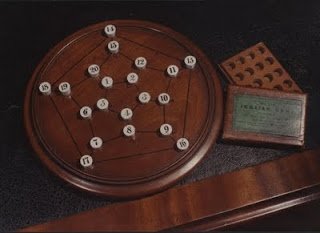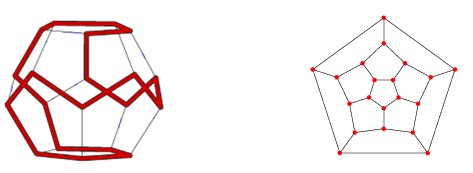
The European history game you probably just successfully completed is actually a modified version of the Icosian game, invented in 1857 by William Rowan Hamilton.

The objective of the Icosian game is to find a path along the edges of a dodecahedron such that every vertex is visited a single time, no edge is visited twice, and the ending point is the same as the starting point.

Such paths are called Hamiltonian cycles and exist on the skeletons of all the Platonic solids and Archimedean solids.

The problem is hard since there is not any general trick to finding out whether a graph has a Hamiltonian cycle.
The only way to determine this is to make a complete and exhaustive search, going through all possible options.

Via his Icosian game, Hamilton also mathematically formulated the well-known Travelling Salesman Problem.
Searching for Hamiltonian cycles is not just a game but comes up in many real world problems and in a wide range of diverse fields like, for example, computer graphics, electronic circuit design, mapping genomes and operations research.
